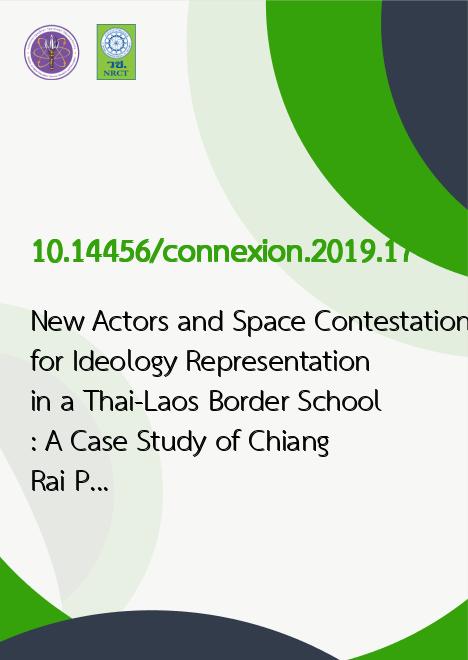
|
New Actors and Space Contestation for Ideology Representation in a Thai-Laos Border School: A Case Study of Chiang Rai Province |
|---|---|
| รหัสดีโอไอ | |
| Creator | Wasan Sapphasuk |
| Title | New Actors and Space Contestation for Ideology Representation in a Thai-Laos Border School: A Case Study of Chiang Rai Province |
| Contributor | Nongyao Nawarat |
| Publisher | Mae Fah Luang University |
| Publication Year | 2562 |
| Journal Title | MFU Connexion: Journal of Humanities and Social Sciences |
| Journal Vol. | 8 |
| Journal No. | 2 |
| Page no. | 87 |
| Keyword | Chiangkhong, Ideology representation, Border school, Official curriculum, Hidden curriculum |
| URL Website | http://connexion.mfu.ac.th |
| Website title | MFU Connexion: Journal of Humanities and Social Sciences |
| ISSN | 24654213 |
| Abstract | The research objective was to study and analyze the space contesting for ideology representation by new actors in a Thai-Laos border school in Chiangkhong, Chiang Rai Province. Baan Rim Khong School (Pseudonym) was chosen for this research using empirical phenomenology approach. Data were collected from (1) reviews of documents including school's curriculum, institutional annual reports, and policies regarding education in the border area; (2) semi-structured interviews with school's Vice-Principal, teachers, and actors; and (3) observations of physical artifacts of the school, classrooms, routine activities in morning ceremony, as well as other special activities. Results of the study revealed that within the past decade, Baan Rim Khong School had seen actors from more than 30 organizations, at least six of which were from local-level organizations that continuously exerting their influences. These new actors have contested in the space of influence held by school's administrators and teachers as well as official and hidden curriculum in order to representation ideologies among the students. Ruk Chiangkhong Group and Amphor Chiangkhong Office were able to contest and occupy mostly significant space of influence. Nevertheless, every organization similarly encountered challenges with regards to school's culture as well as its own internal factors affecting the ability to contest and expand its influences. These internal factors related to the organization's authority and capital resources. |
